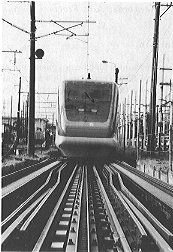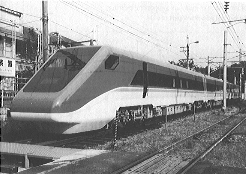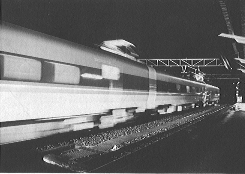 |  |
 | |
There are two different gauges in Japan. One is the 1,435 mm standard gauge tracks used by Shinkansen trains and some private rail companies, and the other a 1,067 mm narrow gauge tracks of most of other lines. Because of this gauge difference, Shinkansen trains and other trains cannot run on the same tracks. This requires passengers to transfer at connecting stations. If the distance between the left and right wheels could be changed to adapt to the rail gauge, trains will be able to run through narrow and standard gauge tracks. Railway Technical Research Institute (RTRI) and Japan Railway Construction Public Corporation (JRCC) are jointly developing gauge changing trains under the leadership of Ministry of Transport (MOT) of Japan.
The target set for this purpose is the development of gauge-changing trains that automatically change the distance between wheels while travelling along a section equipped with special tracks called a gauge changing equipment.
Prior to revenue service, there are many problems to be solved including safety assurance, reliability, durability and the reduction of track maintenance loads. In order to solve these problems, a four-year test project was planned to start in 1997. The plan included performance and endurance tests at the revenue service speed. A prototype three-car trainset was built in November 1998 as the first electric multi-powered gauge -changing train in the world. This train-set was tested for fundamental performance by using a short narrow gauge track, gauge-change equipment and other bench test facilities in Kunitachi by the end of 1998.
In January of 1999, performance tests up to 100km/h will be conducted on a narrow gauge track of West Japan Railway Company. After that test, the train-set will be shipped to Pueblo Transportation Technology Center in Colorado, USA, for performance and endurance tests on the standard gauge track through 2000 September.
The first stage of technical feasibility study of the gauge-changing trains is scheduled to complete in the year 2000.
 |  |
 | |